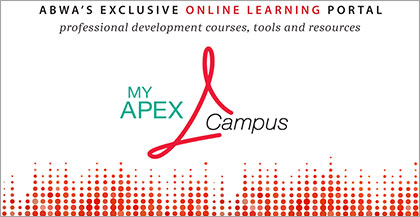


Does Your Corporate Culture Get All A’s? The proactive process to shape the team culture you want.
BY JASON BARGER
It’s an instant gratification world where people/employees/leaders want things to change immediately. They want progress to be a flip of a switch. They want the easy button. Every leader, team and organization wants to snap their fingers and magically arrive at their desired outcomes.
However, developing people and culture doesn’t happen like that. There is no quick fix or hack to developing leaders and the team culture you desire. It’s a process. It takes commitment, discipline and focus. The most compelling team and organizational cultures invest time, energy and resources into shaping the culture they want, not just the culture they’ve experienced in the past. They know that one of their greatest competitive advantages in today’s day is not just WHAT they do as a company, but the culture of HOW they do it. People want to be a part of a compelling culture and contribute their skills to something greater than themselves.
Every team and company wants to be known for having an amazing culture, but only some understand how they are created and are disciplined enough to lead a culture-shaping process. If you’ve studied change theory in your spare time (you know, the process for how any person or group stimulates change) then you understand the reality that we grow as individuals and groups one step at a time.
All change follows the same pattern. The best leaders and teams on the planet know that growing the ecosystem they desire within their organization takes proactive leadership and support. The best team cultures don’t just magically happen, they are intentionally designed and led along the process. And it’s not a top-down dictator style of leadership that is compelling to people, but a participatory style that invites cross-functional representation throughout the organization to share in the dreaming and creation of the culture they desire.
The process to create your culture requires 6 A’s and participatory leadership:
Assess — Many cultures don’t even know where they are on the map. Where are you succeeding and where are you falling short? You’ve got to be honest about your current state as a culture. Momentum begins to build when you can establish urgency and identify opportunities to improve.
Align — People are the lifeblood of every team and organization and in today’s world your people want to participate. They want their mind and heart to be engaged and connected to the “Why,” the Mission at the heart of your efforts. It takes time and space to establish alignment with your people and constant efforts to stay in alignment along the way.
Aspire — What do you want to be different in the future? You have to be able to dream together and paint the vision for the future culture you desire. Give your people the opportunity to see beyond your current reality and into possibilities for a newly created future.
Articulate — If you can’t describe where you’re going and the values you want to guide you as a culture then you can’t be surprised when it doesn’t exist. Your people need common language and the ability to see and share the story of where you’re heading, together. “Language drives behavior” so the best cultures have compelling language linked to actions and behaviors for the future they are creating.
Act — All change requires action. However, action without vision and alignment is a nightmare. Once the aspirational vision for the culture is established, the best leaders and teams empower a bias toward action and identify the next steps they will take to stimulate progress. All change happens when actions grow out of an intentional vision and spirit.
Anchor — Culture-shaping is not a drive-thru experience. It’s not a one-time company meeting or a singular poster on the wall. Every culture must create habits that anchor the values within their organizational ecosystem. The organization intentionally anchors them with their structures for how they hire, onboard employees, identify emerging leaders, do performance evaluations, raise the bar on leadership at all levels, and develop and empower culture ambassadors.
So, does your team culture get all A’s?
Good grades don’t just magically happen. Great schools, great companies, great teams, great communities, and great collections of humans anywhere and of any kind in the world, don’t just magically happen. They are grown, developed, cultivated and led with intentionality.
It’s way easier to ignore studying, practicing, engaging with your people, and just put your head down and “do your job.” And because that is easier, that’s why many team cultures do not become compelling places to work.
The process for developing high-performing and engaged cultures never stops and the best leaders, teams and organizations are committed to the continuous journey of development, vision, communication, engagement, authenticity, and action.
Good luck on your next test. I hope you get all A’s.
About the Author:
Jason V. Barger is the globally-celebrated author of Thermostat Cultures, ReMember and Step Back from the Baggage Claim as well as the host of The Thermostat podcast. As Founder of Step Back Leadership Consulting, he is a coveted keynote speaker, leadership coach and organizational consultant who is committed to engaging the minds and hearts of people and growing compelling cultures. Learn more at JasonVBarger.com

Big Data Creates Big Opportunities for Your Business – 3 Insights for Any Size Enterprise
Big data is critical to business success because it provides leadership with important insights and information. Large enterprises use sophisticated systems to track data and often have internal analysts on their team to crunch their numbers. Or, they hire outside experts to do it for them. Yet any enterprise can take advantage of big data, no matter their size, especially if you re-frame your definition of “big.” You can use your data to better understand your customer needs and buying patterns to further develop strategies that could impact sales. Insights like those developed with data become amazingly useful to any size enterprise!
Slay Your Fears!
You’ve heard some people say, “I’m really not a numbers person.” Perhaps they use this as their excuse for avoiding using data, much less big data, because they might feel reluctant to dive in and give it a try. You do not need an MBA or finance degree to begin working with the data associated with your business, regardless of its size. Anyone can learn and understand at least a couple of the key metrics that impact how they operate and what drives financial success.
If you are reluctant to launch into data analytics, being with some baby steps. Start by identifying two or three key metrics you want to better understand about your business or your customers. Once you have these key metrics identified, then focus on getting the data you need to help better understand what drives these metrics and how you can use the data to increase your enterprise performance. Then those metrics become the fundamentals that shape your thinking about your business strategies and what you need to do to better achieve your business goals.
Focus on how the data you have or can gather links to your business strategies. The key is to search for the critical data metrics that influence decision making. Look for the information that provides you with insight on the variables that impact your revenue and profitability.
Use the Information and Tools You Already Have
You do not need a complicated computer system or major data management firm to figure out what you are already using in your business for data capture. Frankly, many organizations are not fully utilizing the existing software they already have to gather basic information.
Frequently, software programs have the capability to export information into analytical programs such as Excel. Once the data is put into an analytic format, you can do all sorts of data evaluation based on key variables such as customer demographics, profitability, geographic location, purchasing patterns, buying volume, etc. Reviewing data points for various time horizons provides a comparison to see how much is changing during different time periods. Engaging in analytical assessments of your data often provides valuable information on shifts in your target market and identifies new sales opportunities. You might even uncover areas of business vulnerability before they cause major challenges.
Many companies do not fully access the information they have already obtained about their customers. Taking time to input detailed information into a Contact Relationship Management (CRM) system can be a first step. Consolidate the insight from your other information systems to develop a comprehensive customer profile. Then drill down into the information on your customers and tie them to financial measurements such as sales volume, degree of profitability or key target marketing variables.
It is not uncommon for smaller enterprises to have their most valuable customer information written down on sheets of paper or in someone’s head. If you enter your data into a CRM or Excel, you establish the foundation for a more robust data assessment. Then you can begin to pull insights by looking carefully at key variables. You will have a more effective way of targeting your desired consumers as you drill down deeper into the data to see which customers are most valuable to your business. You will be able to make better decisions if you are using thoughtfully mined data. You will also minimize the vulnerability to not having good information to work with if a key employee becomes ill or leaves.
Create Metrics and Dashboards
When you begin working with data, it is essential to create metrics and dashboard reports focusing on the key information so it can be tracked on an on-going basis. Then set up the mechanisms and policies that ensure it is tracked by your employees. Holding your team accountable for reliably gathering the data and tracking it in a timely manner are also important steps to effectively use data.
You can certainly do some of this work yourself, but it might be even better for you to loop in your key employees who are better skilled than you at putting it together. Then you can review the information and draw conclusions.
Another option is to work with an outside consultant who does this all the time and is not going to struggle with a learning curve. Outside experts can help you discover details you might have overlooked while managing the enterprise day-to-day. You are likely to gain better insights – and move much faster – by bringing in outside expertise for a short duration engagement rather than trying to struggle through setting it up by yourself. It is not a cliché that “time is money.” Invest in learning from an expert and then take it over once you develop the foundational skills and have gained some confidence in your own abilities.
Final Thoughts
Learning to leverage data is essential to impacting the growth and success of any business. As you become more comfortable using your initial metrics, you can add on additional key metrics. Using a disciplined approach and continue to look for more metrics to measure. Have fun with it! You will soon have a robust data management system that you and your team can use to more effectively manage your business and your customer relationships. This will provide you with new pathways for business growth and enhanced success.
ABOUT THE AUTHOR:
Jill J. Johnson, MBA, is the President and Founder of Johnson Consulting Services, a highly accomplished speaker, an award-winning management consultant, and author of the bestselling book Compounding Your Confidence. Jill helps her clients make critical business decisions and develop market-based strategic plans for turnarounds or growth. Her consulting work has impacted more than $4 billion worth of decisions. She has a proven track record of dealing with complex business issues and getting results. For more information on Jill J. Johnson, please visit www.jcs-usa.com.



